Sote Dam, located in Ramgarh district of Jharkhand, is an important water resource that serves the needs of local agriculture, irrigation and water supply. Built on the Bhairavi River, this dam is known for the greenery and natural beauty of its surroundings. It is also known by the local people as “Koiya Dam” and “Sote Dam”.
Brief introduction of Sote Dam
Sote Dam is located near Gola, Karachi and Nawadih at a distance of about 30 km from Ramgarh district headquarters of Jharkhand state. This dam has been named differently according to different places. This dam is also known as Gola Dam, Sote Dam and Koiya Dam.
According to the local people, this dam is famous as Koiya Dam and Sote Dam. Sote Dam has been constructed on Bhairavi River. Which later joins Gamodar River. There are unpaved roads and rough roads to reach this dam. One can easily go here by car or bike.
Most of the fish farming in this dam is done through cages. In which many small and large scale fish are reared. A fish market is held here every day. Many villages are settled in the lower part of the dam’s embankment. Water is sent from this dam through the canal to other places for farming.
In which farming is done throughout the year. Apart from this, water is supplied through pipes to the nearby villages, which is used for household purposes.
Location and geographical location
A water overflow pool is located at a distance of about 10 km from Gola. To reach there, one can go through the dam’s base. The roads are not cleared during rains. It takes some time. But everything is fine.
To reach here, one can easily reach Sote Dam from Nawadih via Gola and Chari from Ramgarh district by road. There are many villages located around this dam. Such as Bhurkunda, Patratu, Barkakana, Kundi, Lapanga, Sirka, Bijulia, Chandrapura, Hesla, Narki, Naya Nagar, Giddi, Jaridih, Banwar, Chitarpur etc.
According to Google, its exact address is – GM7C+PXF, Unnamed Road, Chari, Nawadih, Jharkhand 829110
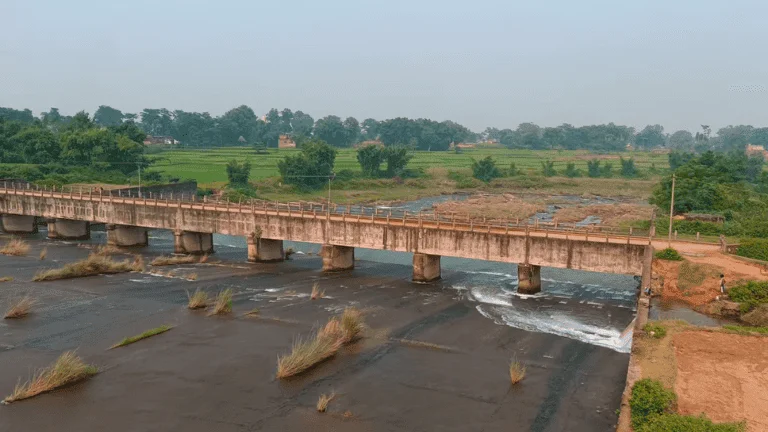
Historical Background of Sote Dam
The historical background of Sote Dam lies in its establishment as an important water resource in the Ramgarh district of Jharkhand. The dam was constructed to meet the growing water needs of the region, particularly for agriculture and irrigation.
Historically, the region faced challenges of inconsistent rainfall and water scarcity, which affected local farming and livelihoods. The planning and construction of Sote Dam were part of a wider initiative aimed at improving water management in Jharkhand.
It was designed not only to provide irrigation but also to control floods and ensure a steady water supply for nearby villages. Over the years, the dam has played a vital role in transforming the agricultural landscape and supporting the socio-economic development of the region.
Sote Dam also holds cultural significance for local communities, serving as a focal point for ceremonies and festivities. The foundation stone for the dam was laid by Maharaja Madho Singh on 30 December 1897 and it was completed in 1903.
Then 5 lakh 84 thousand 593 rupees were spent on its construction. Its filling capacity is 65 feet. The catchment area of the dam is 759 square kilometers.
Purpose and importance of Sote Dam
The reservoirs created by dams not only suppress floods but also provide water for activities such as irrigation, human consumption, industrial use, aquaculture and navigation. Hydropower is often used with dams to generate electricity.
But there is no hydropower plant of any kind on this dam. The primary purpose was to meet the irrigation and water supply in the surrounding villages and to use the dam water for irrigation.
Apart from this, collecting rainwater at one place so that it can play a role in flood control and water management. To deliver water to the homes of local people through pipelines so that the problem of water in each house can be reduced.
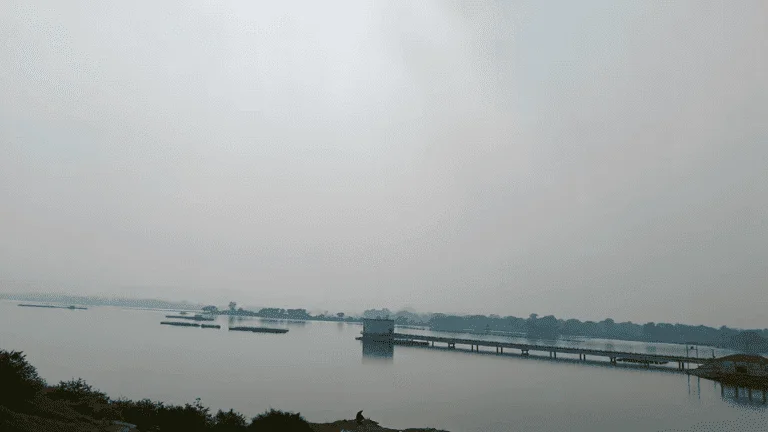
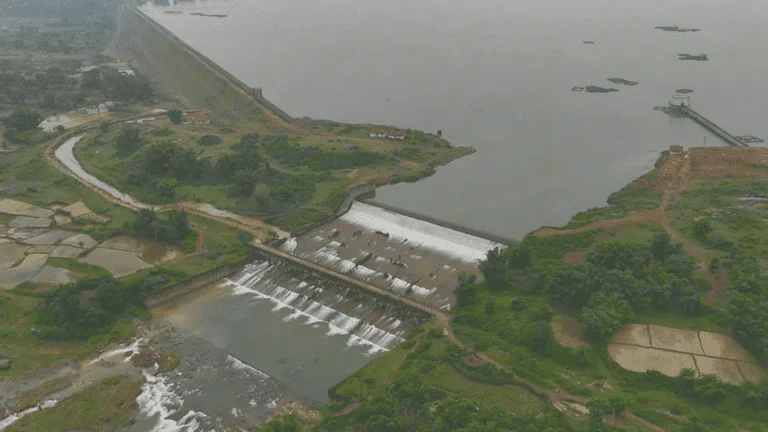
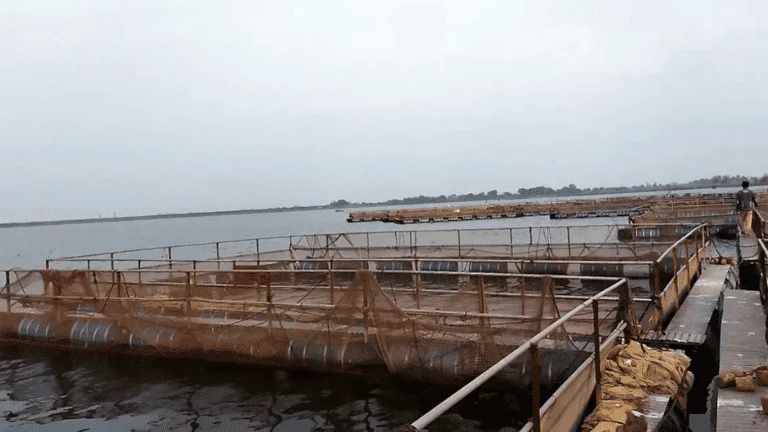
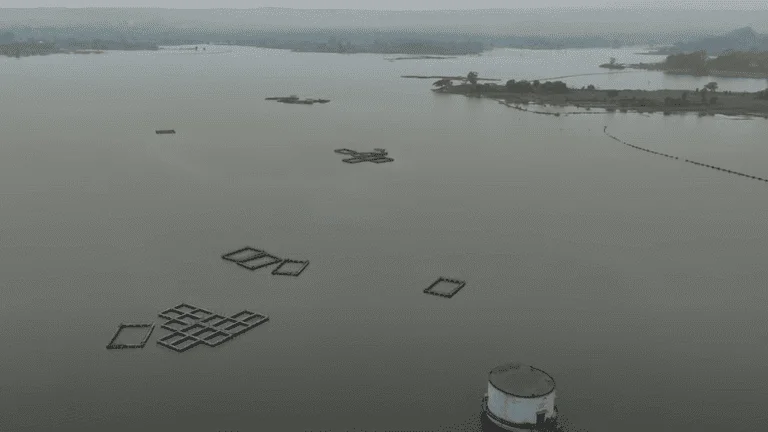
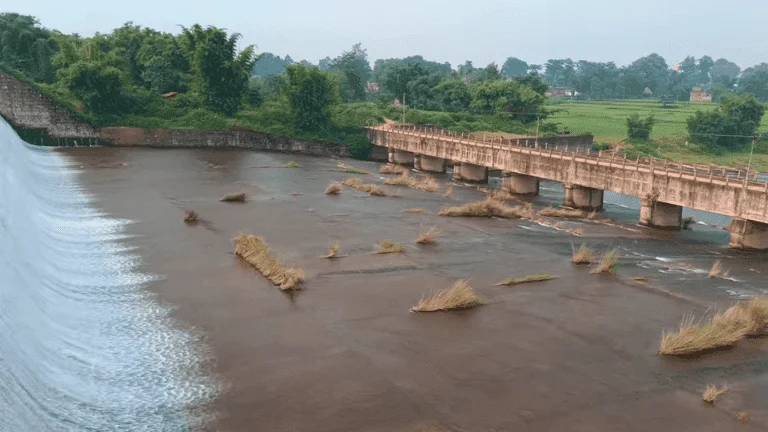
Effect of Sote Dam on local communities
Due to the presence of Sote Dam, many villages of Ramgarh district which are present around the dam have been affected. All of them are getting benefits from this dam. Today, a lush green view is seen all around here. This has been possible due to this dam.
Fish farming is done in large quantities in this dam. You can find fish selling here every day. A fish market is also set up here. Water is supplied through pipes from this dam to meet the water problem of the local people as well as the local market and cities.
Which is positively proving beneficial for the residents of Ramgarh. Apart from this, boating facility is also available here. Due to which many people have got local employment. Fish farming has improved the economic condition of the local people.
Wildlife and biodiversity around Sote Dam
Due to the lush green surroundings of Sote Dam, many animals and birds can be seen in the surrounding forests. Most of the domestic animals are seen here. Which are reared by the people of the nearby villages. The local community here is also dependent on animal husbandry.
Thousands of birds come here from many other places near the dam during the rainy season. Ducks living in water are seen here the most during the winter season. Wild animals are seen around water and around the dam only during the summer season. So if you are a bird lover, then the best time for you can be the winter and rainy season.
Tourist attractions in Sote Dam
Compared to other dams, only natural beauty can be seen here. There is no special means of entertainment for tourists around Sote Dam. There is boating for entertainment here. You can see fish farming. You can talk to the villagers nearby.
Here you can enjoy the greenery and picnic spot. The main attraction for tourists here is the water fountains falling from the dam. Which looks very beautiful during the rainy season. Huts have been built here to rest at various places. The main activities for visitors include boating, photography and hiking.
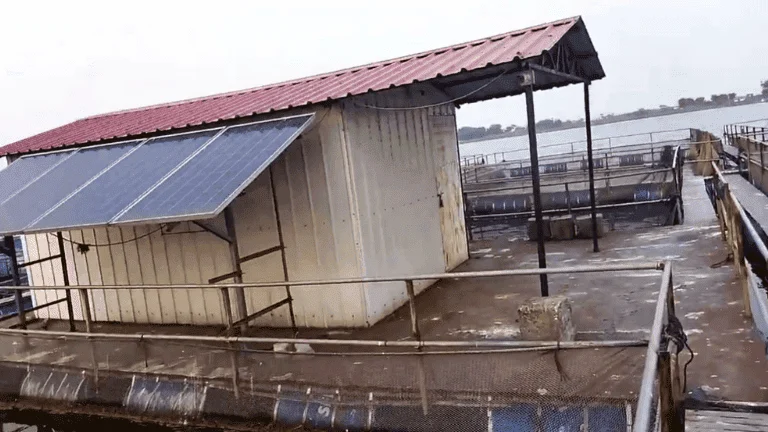
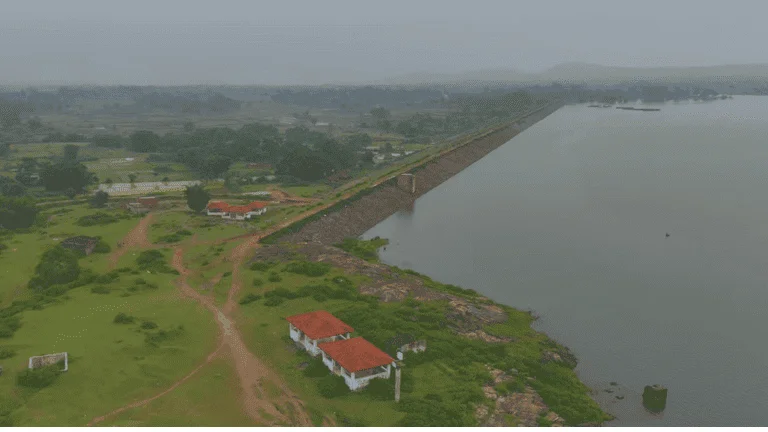
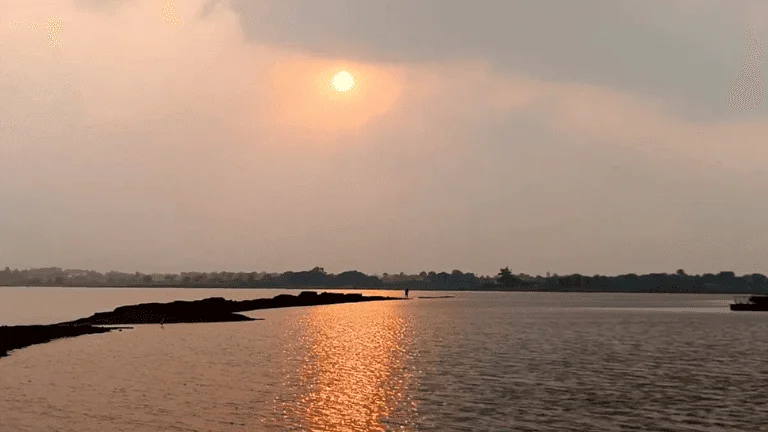
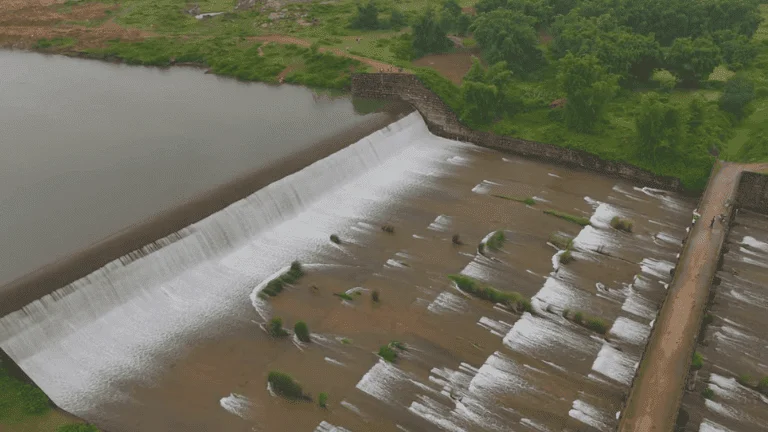
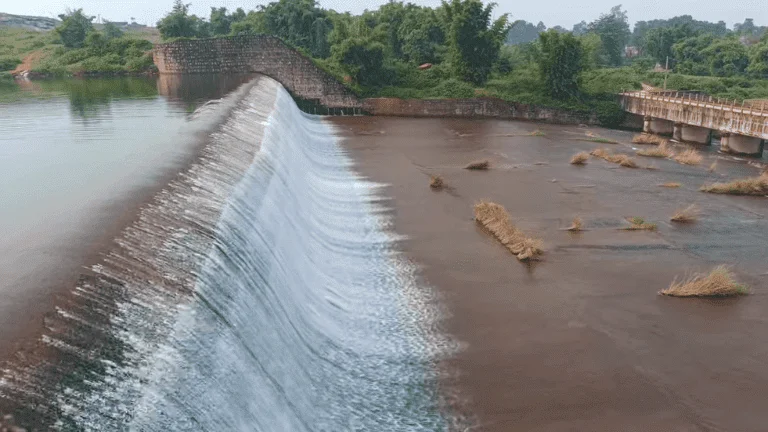
Nearby villages and towns
Sote Dam is surrounded by many villages and towns that benefit from its presence. These include: Gola, Kuju, Mandu, Sardhu, Bhurkunda, Hesla, Topa, Rajrappa, Chitarpur, Barkakana etc.
Gola, known for its agricultural activities, is one of the major villages benefiting from the irrigation facilities of Sote Dam. A picturesque village near the dam, Hesla is a popular destination for visitors seeking peace and natural beauty.
Famous for the Rajrappa temple, this village combines cultural significance with natural beauty near the Sote Dam. A bustling town known for its coal mines, Kuju plays a role in the local economy and is close to the dam.
Traditional festivals are celebrated with grandeur, often holding events near the dam. The surrounding areas are rich in folk art, music and traditional dance forms that reflect Jharkhand’s vibrant cultural heritage. The combination of natural beauty and cultural vibrancy makes the region a unique destination for tourists interested in exploring local traditions.
Best time to visit Sote Dam
The best time to visit Sote Dam is between October and March. The weather is pleasant at this time, and the cool breeze of winter makes this place even more attractive. After the monsoon, the dam and its surrounding area is filled with greenery, making it a paradise for nature lovers.
The cool weather is perfect for picnics. This time is ideal for bird watching, as migratory birds can also be seen here. The area of the dam provides coolness and relaxation during the summer evenings (April-May) mornings and evenings. Traditional fairs and cultural programs are held in the surrounding villages during this season.
Access and Transportation to Sote Dam
The overflow pool of water of Sote Dam is located at a distance of about 10 km from Gola. It is located at a distance of about 30 km from Ramgarh district headquarters. It can be reached by road. Ramgarh district can be easily reached by road, air and rail.
To reach Ramgarh, it is about 60 km from Ranchi via Ranchi-Ramgarh National Highway (NH-20). About 110 km from Dhanbad via Gomia and Ramgarh. About 75 km from Bokaro via Chandrapura and Ramgarh. About 50 km from Hazaribagh via NH-33 and Ramgarh.
It can be about 95 km from Chatra district via Hazaribagh and Ramgarh and about 150 km from Giridih via Bokaro and Ramgarh. Public transport such as buses and trains are easily available to Ramgarh, from where local vehicles are available for Sote Dam.
Facilities at Sote Dam
There is no food and drink facility available around Sote Dam. There is also no facility for overnight stay here. Yes, if you want to stay overnight in Ramgarh district, then many hotels are available. Tourists must bring all the necessary items with them before coming here.
If possible, use a small vehicle here. Avoid coming here during the rainy season. Because the roads to reach the dam are unpaved and rough, so there is a possibility of mud and inconvenience on the roads during the rainy season.
For entertainment, boating facility is available here. You can go boating. You can have a picnic. You can enjoy the views here by watching fish farming. You can take a bath. You can enjoy the water fountains here. You can visit the nearby villages. You can gain knowledge about the customs and community here. You can enjoy the natural beauty.
Role of Sote Dam in Irrigation
Sote Dam is an important water source for Ramgarh district, which meets the irrigation requirements of the region. The dam was constructed primarily with the aim of ensuring water supply for farming. The dam creates a network of canals and reservoirs to carry water to the surrounding fields, thereby promoting crop production.
- Water required for Kharif and Rabi crops is provided.
- The supply of water from Sote Dam is maintained throughout the year, allowing farmers to farm even during droughts.
- The dam recharges local water sources, thereby improving the groundwater level.
- Its water management helps in adopting modern farming techniques.
- There is an increase in vegetable production along with crops like rice, wheat, and pulses.
- Increase in yield, improvement in agricultural income, solution to drought and water crisis.
- Apart from traditional crops, cultivation of vegetables, fruits and medicinal plants has been promoted.
Future Developments at Sote Dam
Today, Sote Dam does not have any special recreational facilities. This place could have been considered more popular if there was a park near the dam. With the presence of a hydraulic power plant or solar plant here, electricity could be supplied to many nearby villages and cities.
Due to good roads here, tourists from other districts would definitely come to visit this place. With the development and beautification of this dam, apart from local people, tourists from other places would come here to spend holidays and roam around.
Due to which its popularity would increase and development would progress rapidly here. This can be expected in the coming few years.
Safety Measures at Sote Dam
Many important measures have been taken to ensure the safety of tourists and local residents at Sote Dam. Such as:
Warning signboards through fences and signboards in the dam area advise visitors to stay away from risky areas. Appropriate announcements are made by the local administration before the flow of water and release of water from the dam. Life jackets and trained staff are available for visitors for boating and water sports.
Precautions and Safety Guidelines for Visitors
- Do not leave children alone near the dam banks or deep water.
- Always keep children under supervision.
- Use only designated walking paths and tourist areas.
- Avoid entering unsafe areas.
- Be cautious as water level may rise suddenly during monsoon.
- Avoid visiting the dam area during bad weather.
- Follow all announcements and instructions issued by the local administration.
- Do not go near the dam at the time of water release.
Others Tourist Places in Ramgarh District
- Pona Parwat Dham / Hill
- Gola Dam / Koiya Dam/ Sote dam
- Rarha Waterfall
- Masmona Ghati / Hill
- Rangarh Ghati
- Mota magarmach Parjanan Kendra
- Sikandri Valley
- Khiri Baudh Math Mandir
- Shiv Mandir And Tuti Jharna
- Patratu Dam
- Nawlakha mandir
- Bagda Ghati
- Palani Waterfall
- Rajrappa waterfall
- Lotash mandir
- Surya mandir Rajrappa
- Maa Maha Maya Mandir
- Prachin Shiv Mandir
- Maa Chhinmastike Mandir
- Patratu Ghati Ramfgarh
FAQ’s
1. Where is Sote Dam located and by what names is it known?
Sote Dam is located in Ramgarh district of Jharkhand state. It is located near Gola, Karachi and Nawadih. It is also known by the local people as “Koiya Dam” and “Sote Dam”.
2. What is the main purpose of Sote Dam?
The main purpose of this dam is to supply water for irrigation. Apart from this, it helps in water collection, flood control and ensuring water supply to local villages.
3. How to reach Sote Dam?
Sote Dam is located at a distance of about 30 km from Ramgarh district headquarters. It can be easily reached by road. The nearest major route reaches the dam from Nawadih via Gola and Cheri.
4. What are the major villages and towns around Sote Dam?
There are many villages and towns located around Sote Dam, the major ones being Bhurkunda, Patratu, Barkakana, Kundi, Chitarpur, and Hesla. These villages benefit from the irrigation and water facilities of Sote Dam.
5. What are the tourist attractions at Sote Dam?
The natural beauty and serene environment of Sote Dam attracts tourists. There are suitable places for boating, photography, and picnics. The view of the falling water here during the monsoon looks extremely beautiful.
6. What safety measures have been taken at Sote Dam?
Warning indicator boards, fences, and trained personnel are present to ensure safety in the dam area. Visitors are given directions to stay away from dangerous areas. Administrative announcement is made before releasing water.
